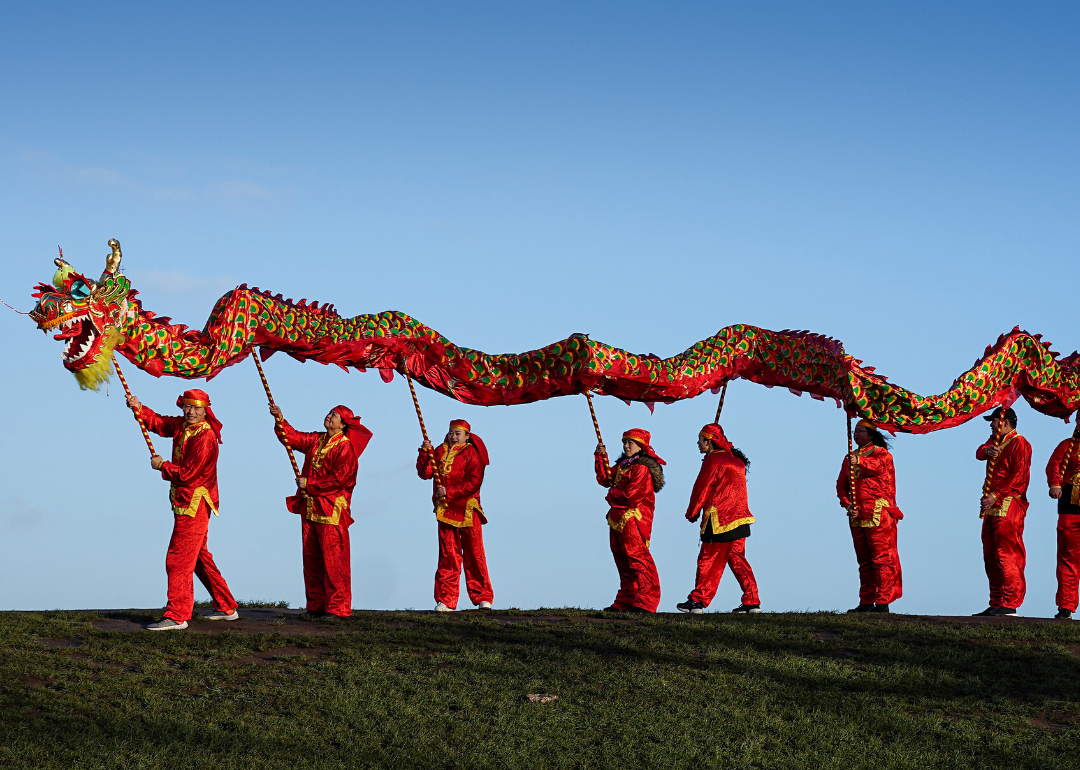
Chinese New Year in 30 stunning images
Also known as the Lunar New Year, Chinese New Year celebrations are a 15-day extravaganza of cultural events and traditions that are celebrated worldwide. While many regard it as a Chinese tradition, the Lunar New Year is celebrated across a variety of Asian cultures, including Korean, Thai, Singaporean, Taiwanese, Malaysian, Indonesian, and Filipino cultures. Additionally, Lunar New Year celebrations happen in Chinatowns across the world, with notable events in New York City, London, Sydney, and Vancouver. Chinese New Year festivities have become an attraction around the world, drawing tourists who are eager to partake in celebrations.
For observers of the lunar calendar, the new year marks a point of growth, a chance to reset, and renewed hope for a prosperous future. The tradition of celebrating the Chinese New Year is believed to have begun during the Shang dynasty as a spring carnival that welcomed the season and paid tribute to the gods and ancestors. Since then, the holiday has developed robust traditions that include special foods, vibrant performances, and firework shows. While some customs have become synonymous with the celebration of the Chinese New Year, such as red decorations and the famous lantern festival, others focus on the unique traditions of the individual locales and cultures. Though these customs can vary by region, the spirit of hope and good fortune unites all cultures that celebrate the Lunar New Year.
In celebration of the Chinese New Year, Stacker compiled a collection of 30 incredible images showcasing the diverse traditions of the celebration. Keep reading to learn more about these traditions in practice.
You may also like: Origin stories behind 30 holidays
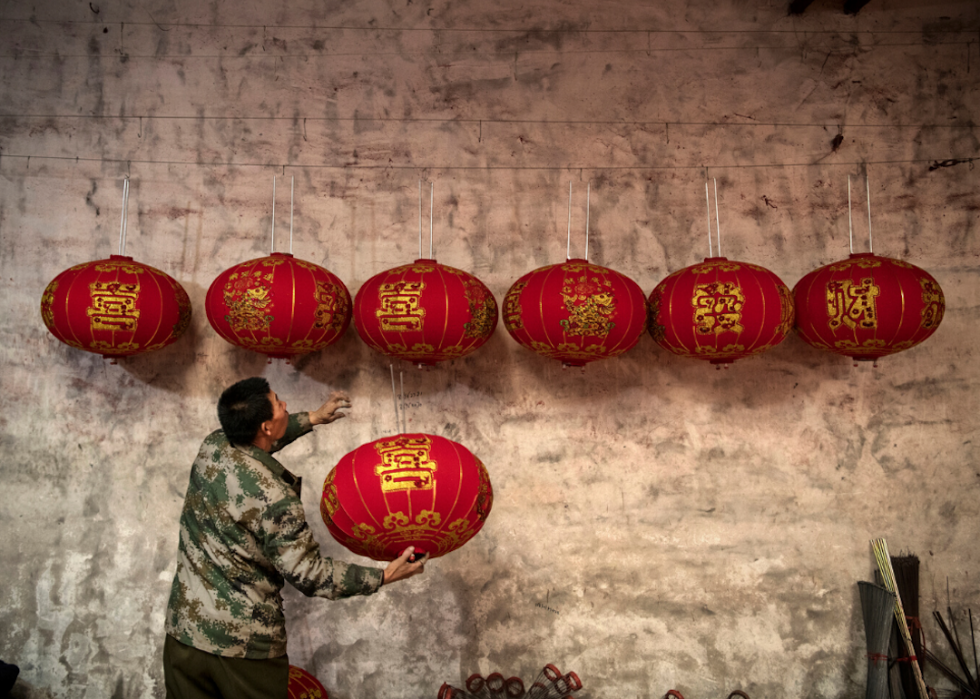
Traditional red lanterns
Red is the color of luck in Chinese culture, and these traditional red lanterns are an essential decoration when ushering in the new year. The lanterns feature hand-painted characters wishing health, peace, and prosperity for the upcoming year. Hanging lanterns for the Chinese New Year is a 500-year-old tradition, originating during the Han dynasty. Here, a Chinese worker hangs freshly hand-painted red lanterns up to dry in the village of Tuntou in Hebei province, China. Tuntou is a village famous for its production of red lanterns.
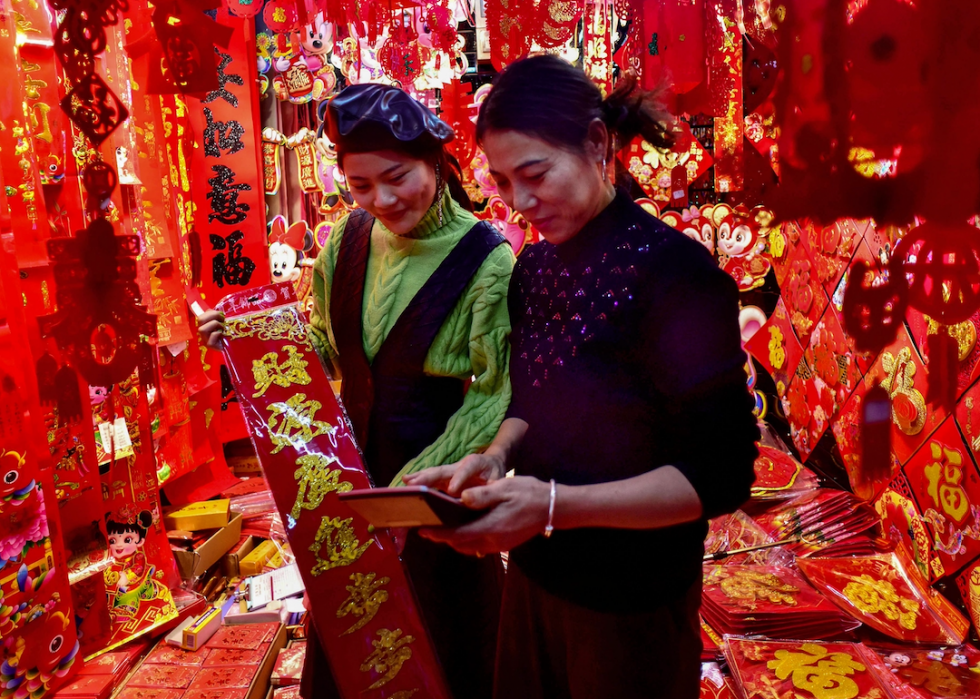
New Year’s market stalls
As the new year approaches, the New Year’s markets open annually in the streets with stalls offering red envelopes with custom calligraphy, decorations, flowers, and other traditional wears for New Year’s celebrations. These markets are usually open a few days in advance of New Year’s Eve. Pictured here, two women consider decorations for their Lunar New Year celebrations at a market in Yiwu in China’s eastern Zhejiang province.
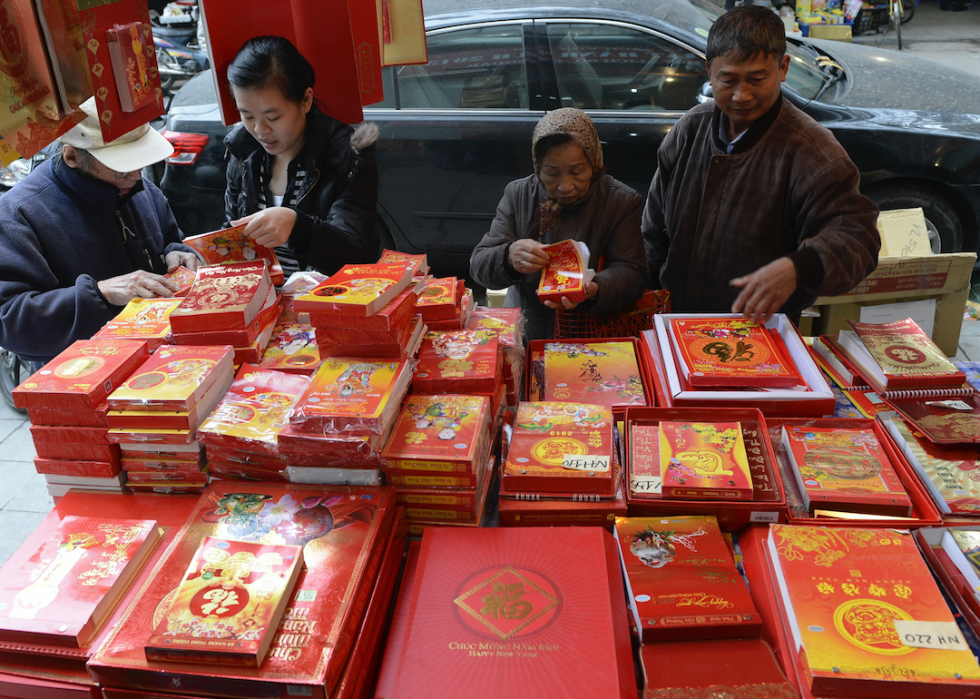
Lunar calendars
The Chinese culture, as well as other Asian cultures, including Vietnamese culture, observe the lunar calendar. For millennia, the passage of time has been closely linked in the Chinese culture to the cyclical pattern of agriculture. For this reason, the lunar calendar is also referred to as the agriculture calendar or the old calendar. This picture shows customers shopping for a variety of lunar calendars in front of a bookstore in downtown Hanoi in Vietnam.
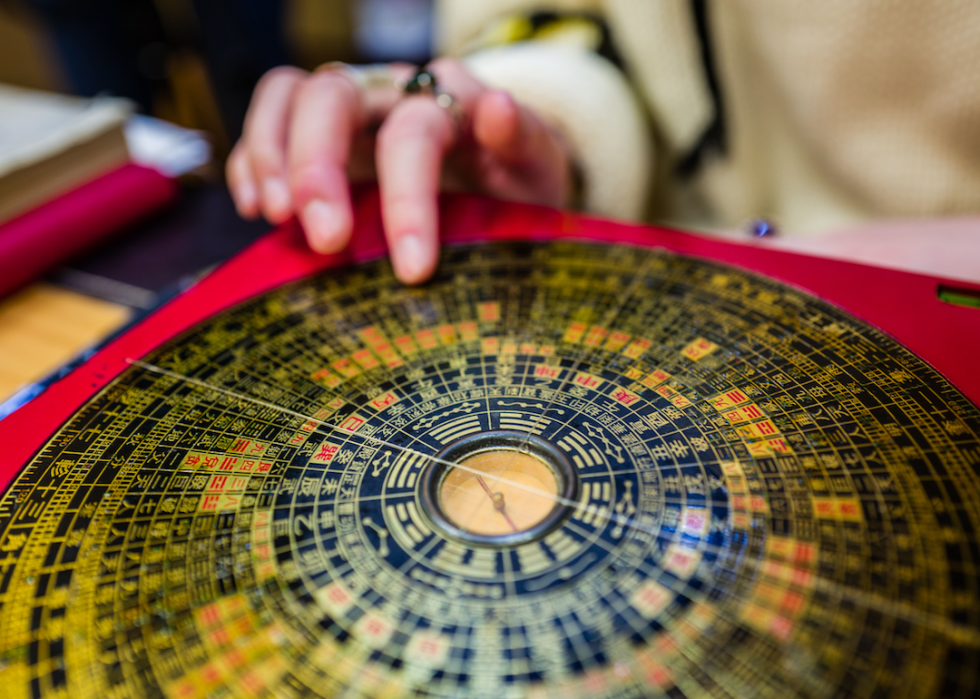
Feng shui predictions
An incoming new year is a time to start anticipating what is ahead. Feng shui consultations are called upon during this time to predict and navigate the new Chinese zodiac year. In large cities like Hong Kong, people from all socioeconomic backgrounds consult Feng shui practitioners to consult about the new year. Here, Feng shui master Thierry Chow uses a luopan, or Chinese compass, at her office in Hong Kong ahead of the new year.
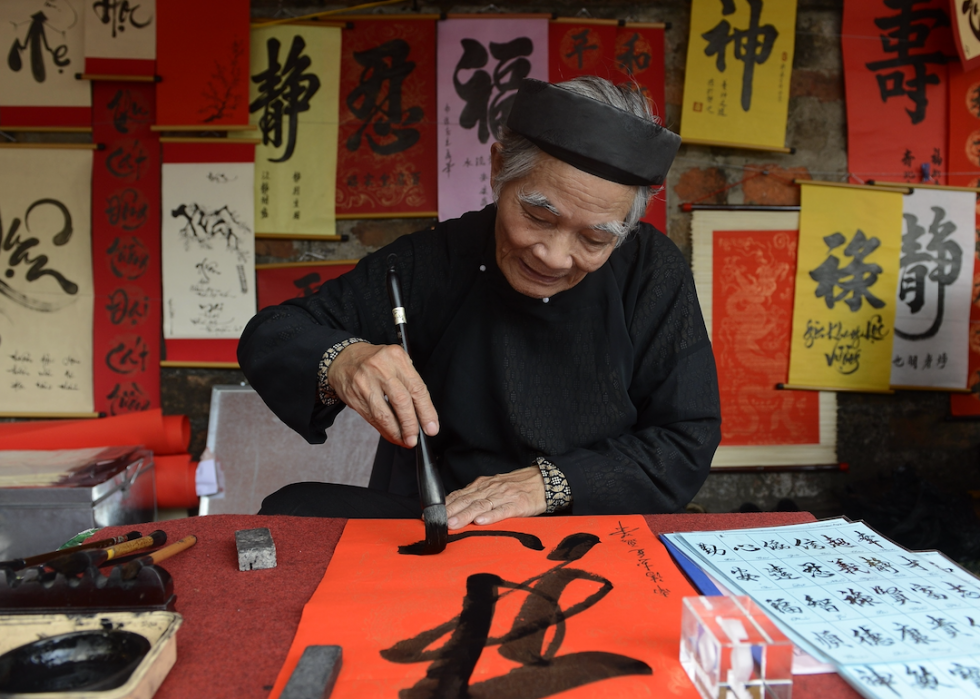
Couplets
At the New Year's markets, calligraphers sell decorative banners and envelopes with couplets wishing luck, prosperity, and good health for the new year. This photo is of a calligrapher outside the Temple of Literature in downtown Hanoi in Vietnam in preparation for the Vietnamese Lunar New Year or Tet.
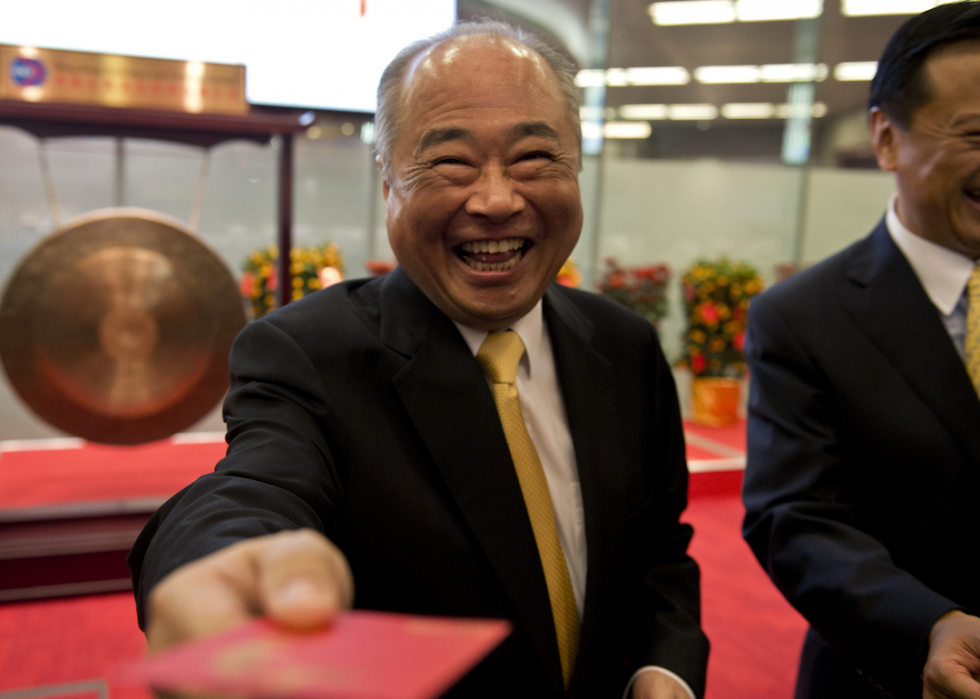
Red envelopes
Money-filled red envelopes, known as ang pows, are a customary gift given out primarily to children and teenagers at familial New Year’s Day feasts. They can also be given out to friends and family as a celebratory gift. Above is a photo of Hong Kong Exchange Chairman Chow Chung-kong handing out a red envelope after the first day of trading began after the Lunar New Year holiday in Hong Kong in 2014.
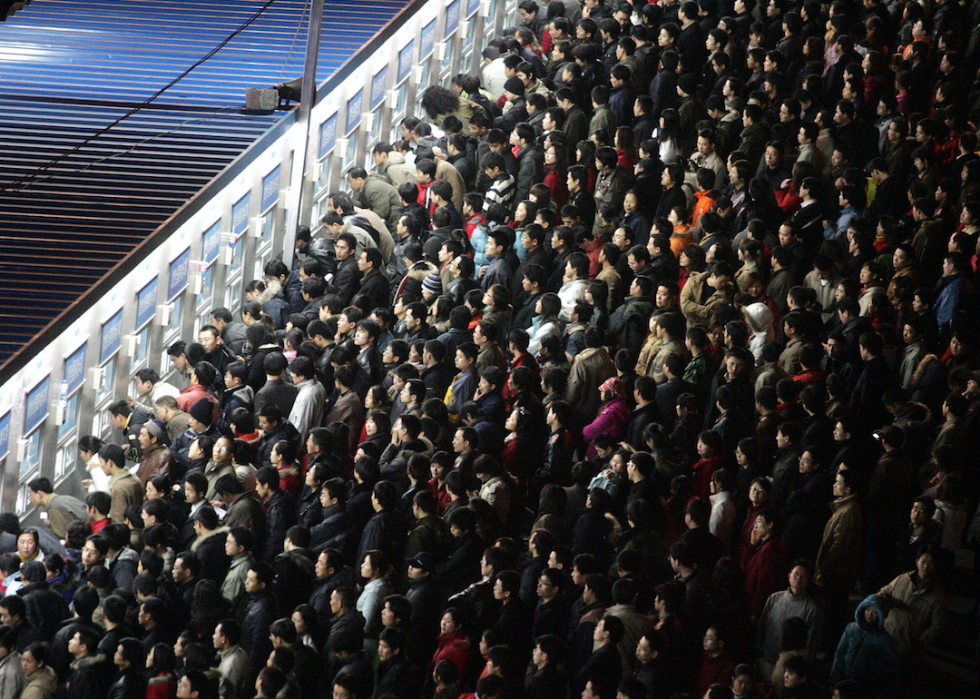
Spring travel season
The Lunar New Year is the world’s largest annual mass migration, and Chinese residents rush to train stations to secure tickets to see friends and family (as seen in the photo of a Beijing railway station above). The 40-day travel rush, also known as Chunyun, begins in mid-January and goes through to mid-February.
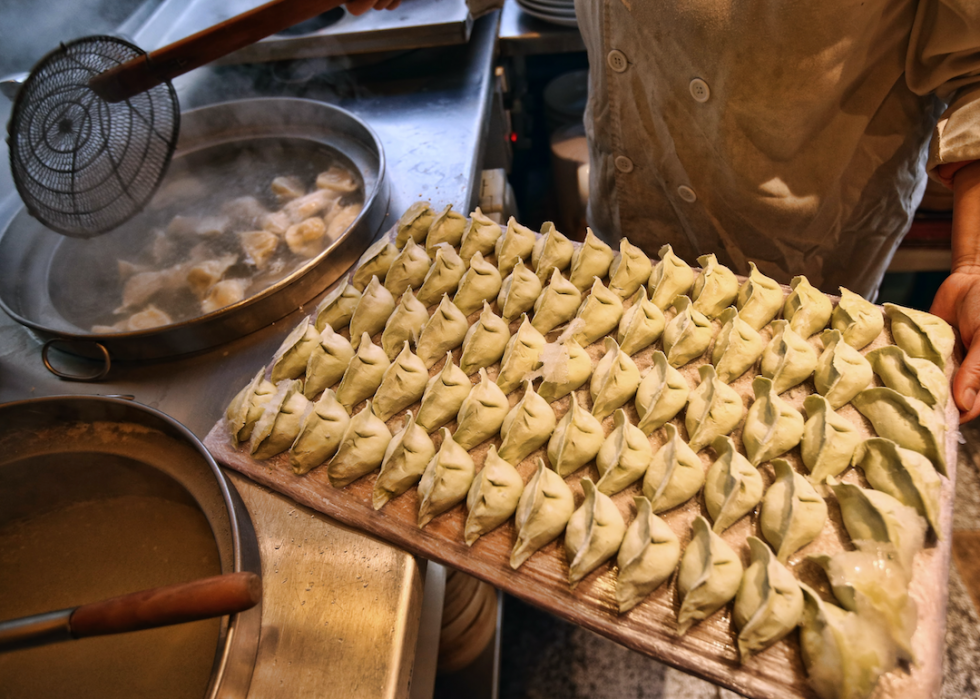
Preparing traditional foods
Preparing special New Year’s foods is an essential tradition in Chinese culture. Customary foods, like many of the other New Year’s traditions, are meant to give blessings for the new year. Here, a London Chinatown restaurant prepares for New Year’s Day customers by making customary dumplings. Along with dumplings, spring rolls, noodles, and steamed fish are traditional foods prepared for the large annual feasts.
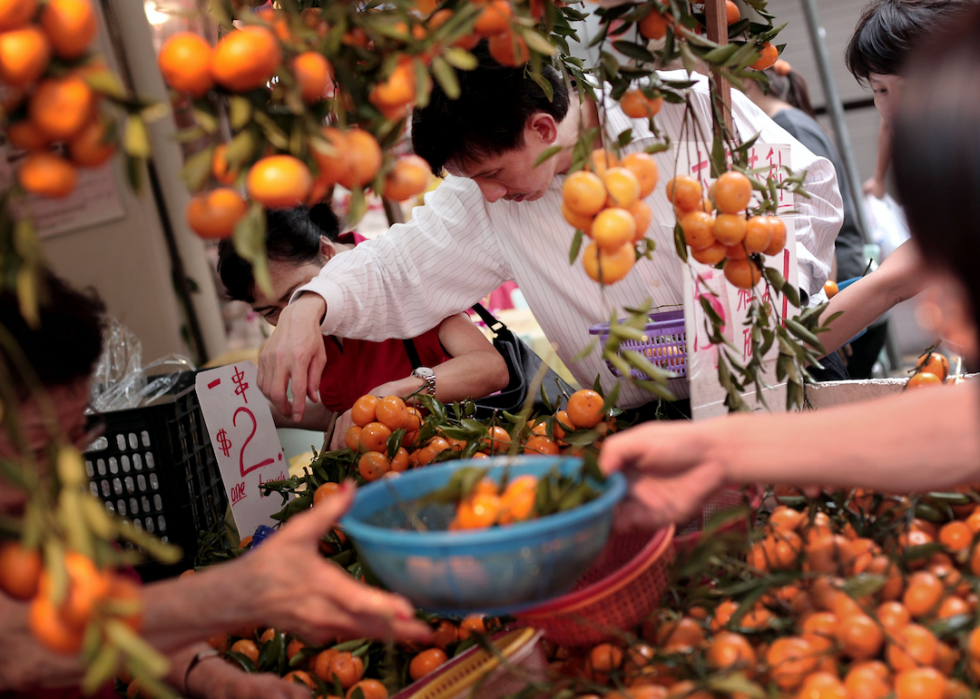
Oranges
Oranges and tangerines are a symbol of luck and good fortune and make great gifts for loved ones for the new year. The gold color of their skin is symbolic of prosperity in Chinese culture. Above, Singaporeans shop for tangerines and oranges at a street stall ahead of their New Year’s celebrations.
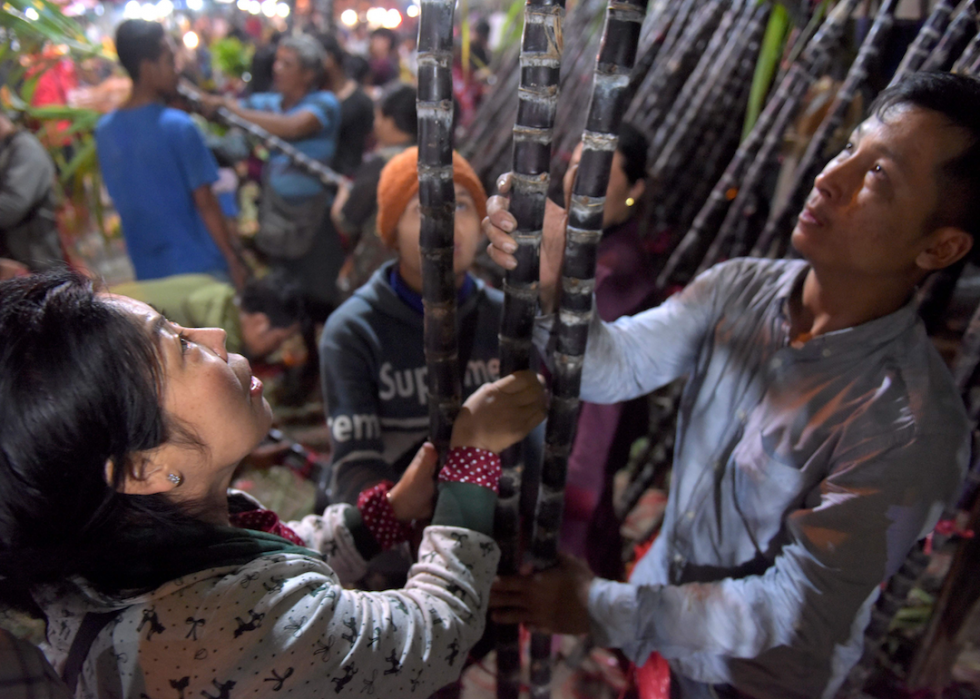
Sugarcane
In some countries, it is traditional to burn sugarcane stalks with paper offerings for the dead on the ninth day of celebrations. On this ninth day, families either gather at the temple or their home's alter to burn the stalks of long uncut sugarcane along with paper offerings and other fruits as a tribute to their ancestors. Pictured above, shoppers buy sugarcane in front of a temple to mark the start of the Lunar New Year in Kandal, Cambodia.
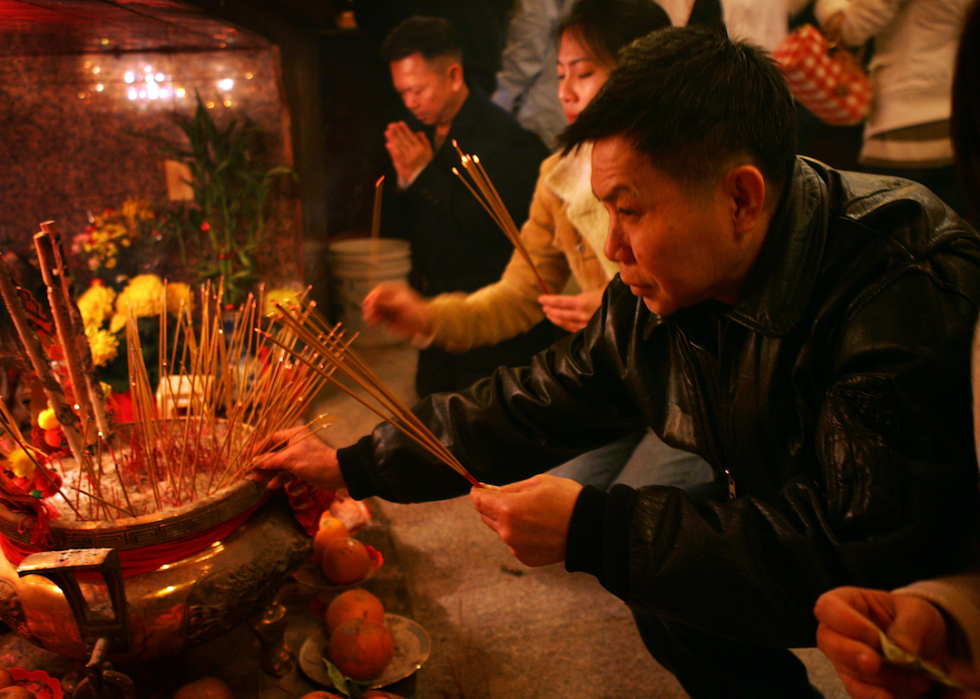
Honoring gods and ancestors
The tradition of honoring gods and ancestors typically starts at 11 p.m. on New Year’s Eve, followed by a celebratory feast. Honoring gods and ancestors are a way for people to honor their heritage and is based on the belief that deceased family members look over their family and have an influence on their future prosperity. Here, Los Angeles celebrants welcome the new year with offerings of blessings to the deities during a midnight ceremony at the Chua Thien Hau Temple in Chinatown.
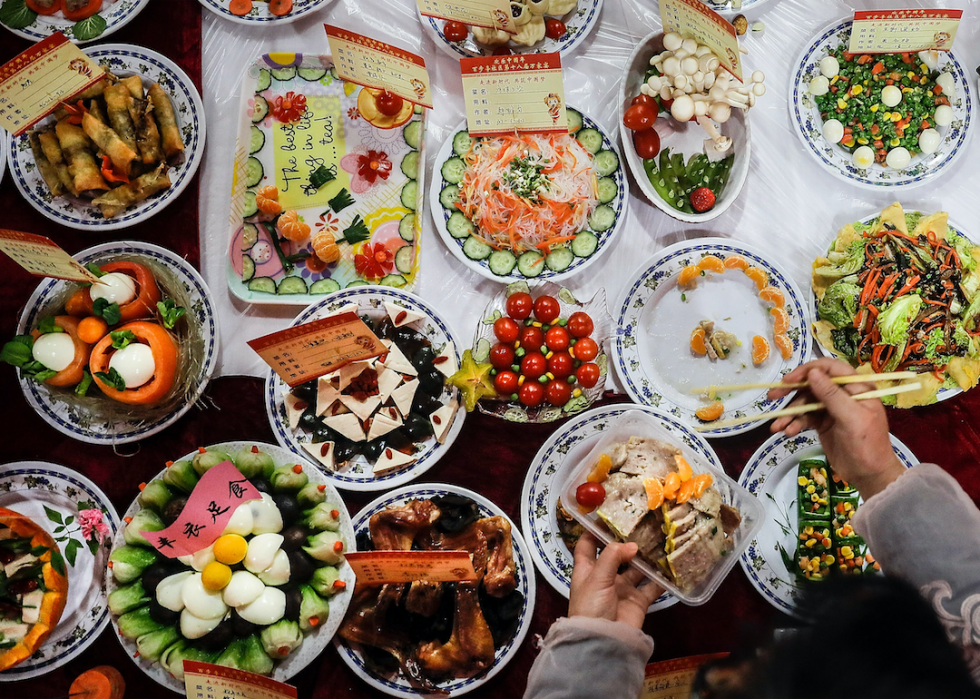
Reunion feast
The reunion feast is regarded as one of the most important traditions during the Lunar New Year. Also called Tuan Nian or Wei Lu, the reunion feast is named as such because all children are to return to their families for a meal of symbolic food to usher in a prosperous new year. Photographed is a feast made up of traditional dishes during a Lunar New Year gathering in Wuhan, Hubei province, China.
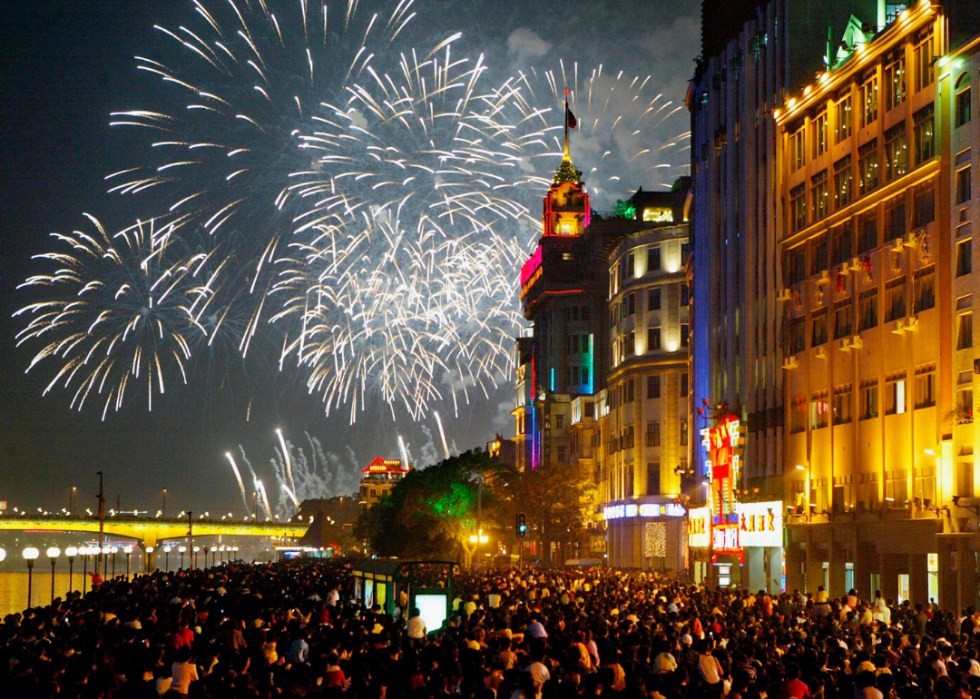
Midnight fireworks
On the night of New Year’s Eve, in Chinese tradition, children are allowed to stay up late, and all of the lights in the homes are to be on through the night. At midnight, a big show of fireworks bids the past year farewell and ushers in the new year. Pictured above, people watch firework displays to mark the Chinese New Year beside the Pearl River in Guangzhou, China.
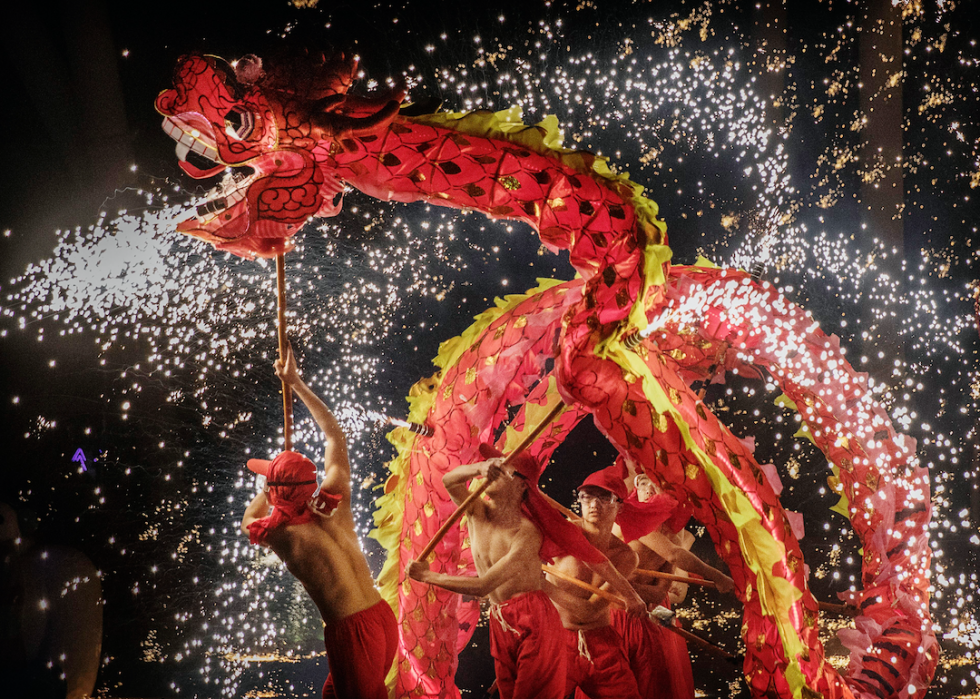
Dragon dance
The dragon dance dates back to the Han dynasty, initially for the purpose of worshipping ancestors. However, by the Tang dynasty, the dragon dance became a celebratory dance for the new year, symbolizing wisdom, power, wealth, and, most importantly, luck. In this photo, Chinese dragon dancers perform at a fair at a local park on the fifth day of the Chinese Lunar New Year in Beijing, China.
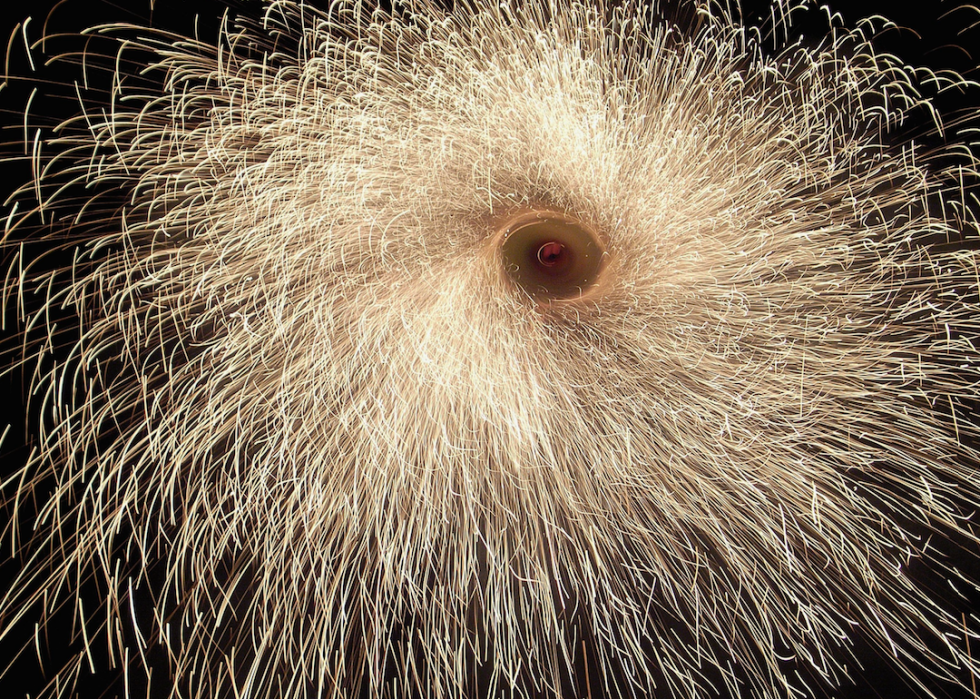
Firecrackers
The tradition of lighting firecrackers during Chinese New Year celebrations is intended to scare off an evil monster named Nian, who would come out to eat villagers and destroy their houses on New Year's Eve. Here, a firework goes off on the eve of the Chinese New Year in Jinzhai County, Anhui province of China.
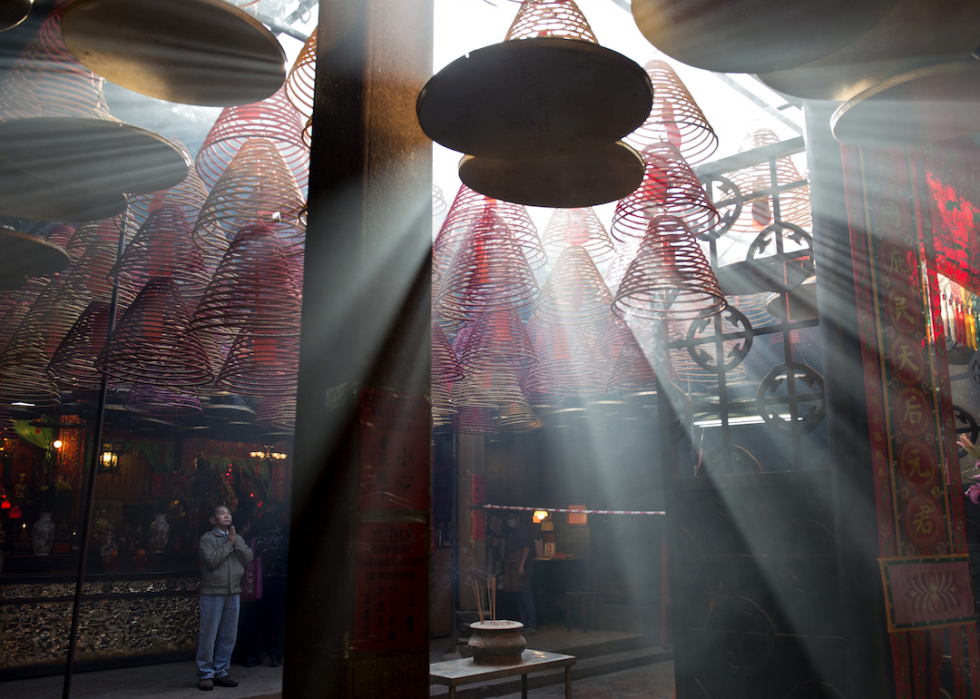
New Year's Day customs
Early on the morning of New Year’s Day, children awaken to open their red envelopes, and the family goes door to door, greeting their relatives and neighbors. After this, many families head to the temple to pray. As shown above, a man prays at the Tin Hau Temple in the Yau Ma Tei area of Hong Kong on the fourth day of the Lunar New Year holiday.
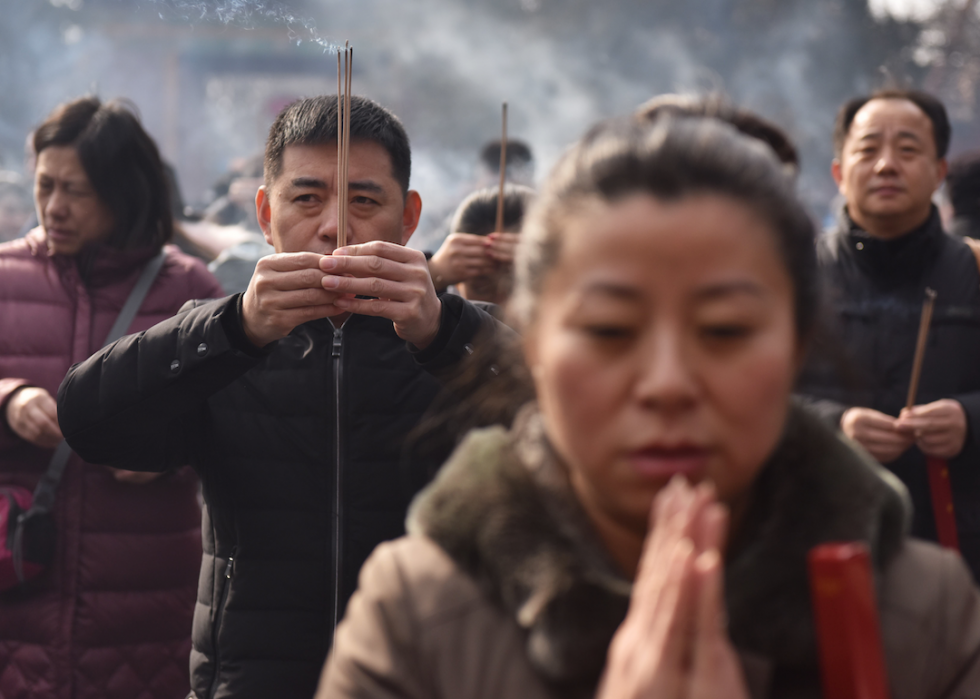
Prayers
On New Year’s Day morning, families visit the temple to pray to the god of wealth, Tsai Shen, offering incense and inviting the god into their homes. Firecrackers are lit again to welcome Tsai Shen in the new year. Pictured above, people pray and burn incense for good luck at the Lama Temple in Beijing.
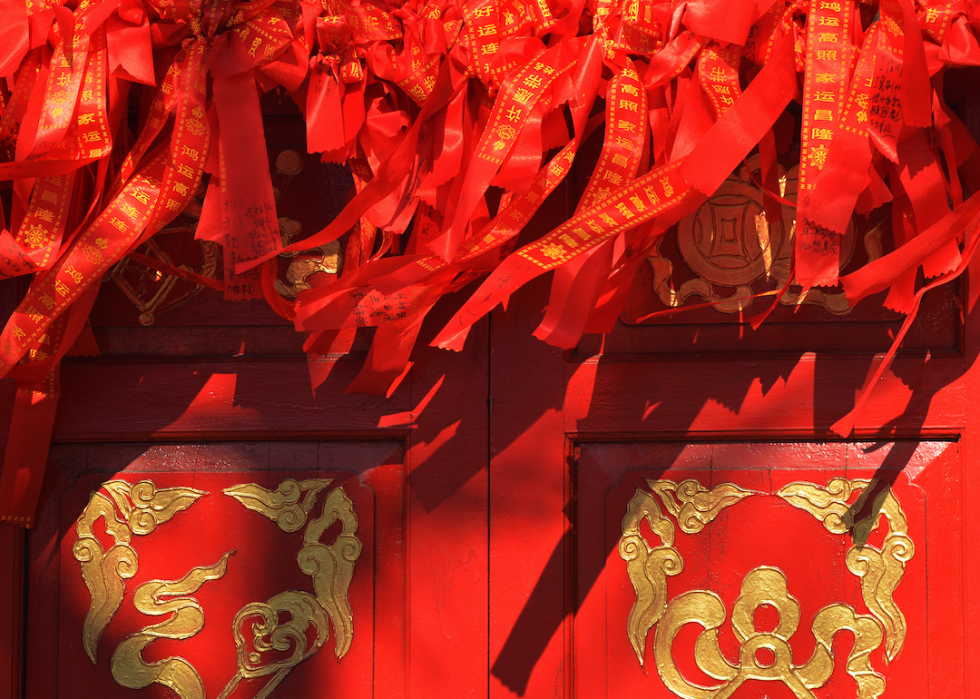
Temple doors
It is customary for worshippers to hang red ribbons on their temple doors to bring luck and prosperity. Here, Chinese prayer ribbons hang from a door at the Baoshan Temple in the Chinese border, Dandong.
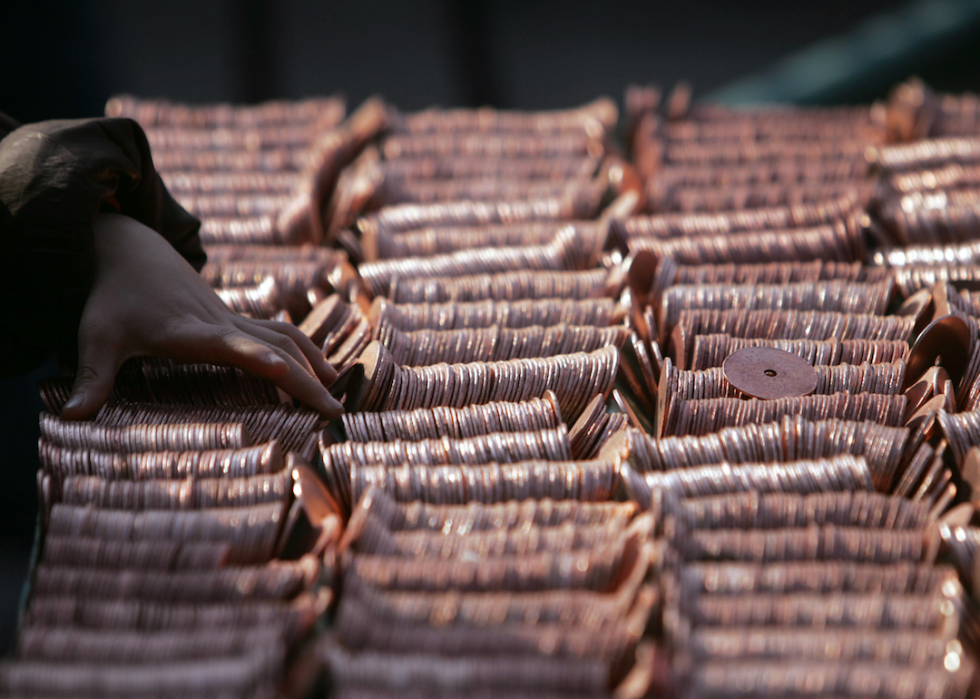
Coins
During celebrations at temples, it’s customary to throw coins into a well to wish for a year of good fortune and to please the god of wealth. Even tourists can participate in the tradition, with many coin vendors selling coins nearby. Above, a tourist buys coins at the White Cloud Temple in Beijing, China.
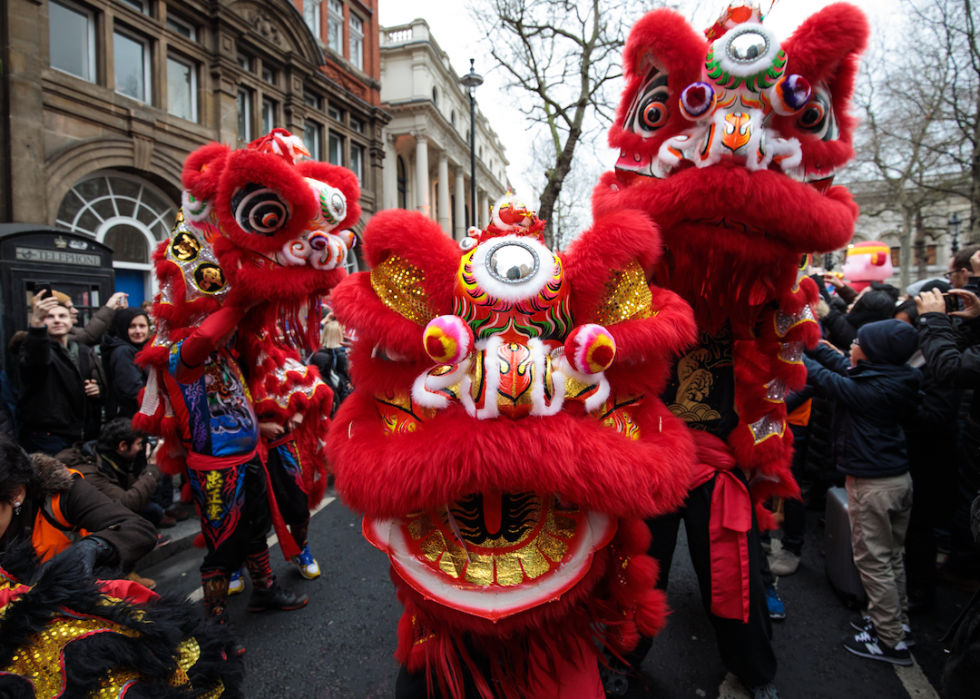
Lion dance
This traditional dance is performed on big occasions, including New Year's. This dance is intended to bring luck while also chasing away evil spirits. The lion itself symbolizes power, wisdom, and superiority. Here, performers take part in a lion dance during the Chinese New Year parade in London, England.
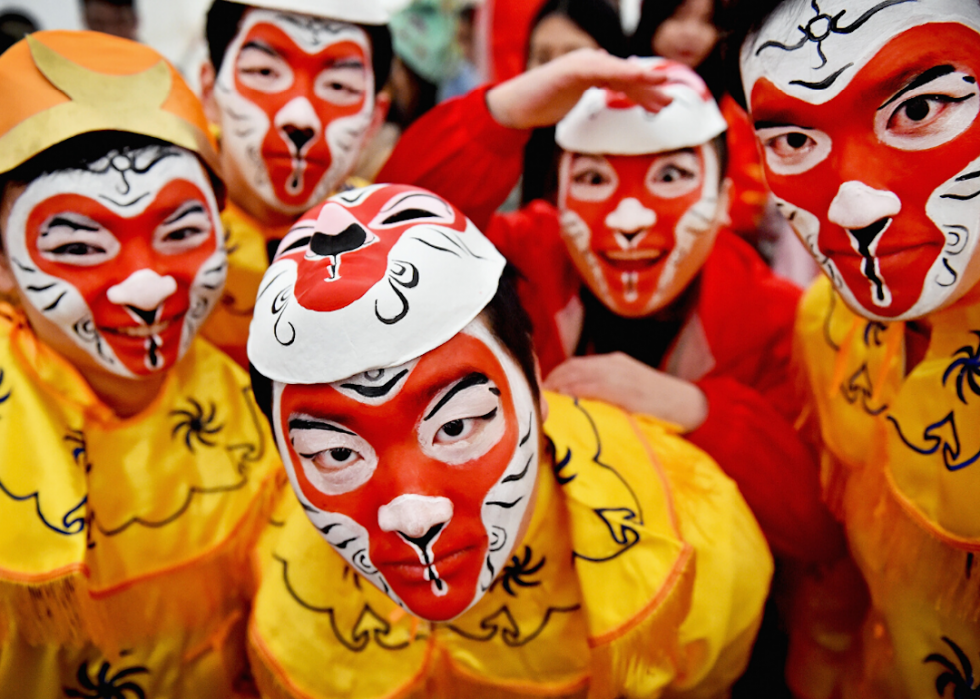
Parades and costumes
New Year’s brings with it various parades over approximately 15 days of celebrations. Chinese New Year parades happen across the world, with performers dressing up to represent the incoming zodiac year or performing lion and dragon dances. Pictured above, parade performers dress up to welcome the Year of the Monkey in 2016 in Glasgow, Scotland.
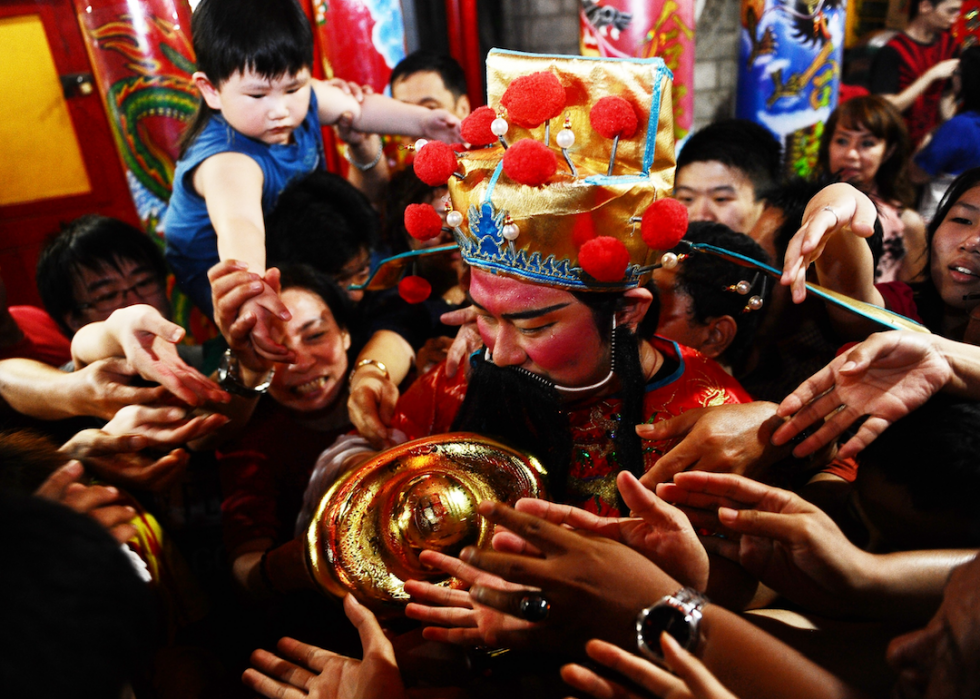
Folk pageantry
One way that celebrating countries pay tribute to their ancient folklore is by performing reenactments during celebrations. Folk pageantry customs can vary depending on the culture, but it’s a fun way for people to celebrate their ancient stories. As shown above, Cai Shen Ye (God of Fortune) gives red pockets to worshipers at the Hong San Ko Tee Temple during celebrations in Surabaya, Indonesia.
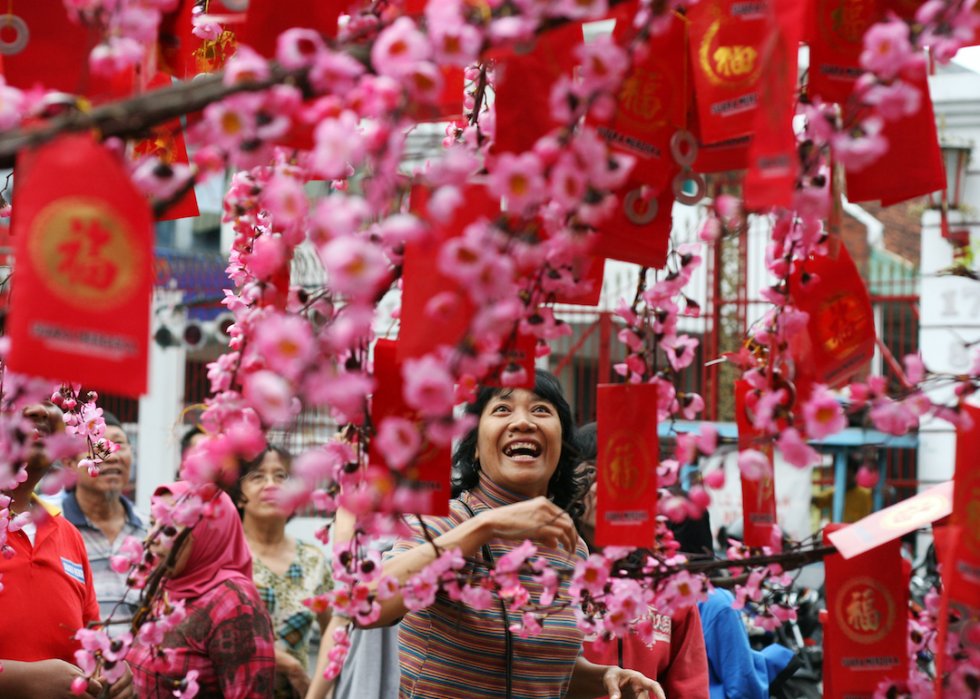
Wishing tree
The wishing tree is another Chinese tradition that is intended to usher in good luck for the year. Both tourists and locals flock to temples to write down their wishes for the new year on paper. The paper is then tied to an orange (for extra luck) and thrown onto the tree’s branches. According to legend, if the orange successfully sticks in the branches, the wish will come true. Above, people throw their wishes at a wishing tree as the community celebrates in Semarang, Indonesia.
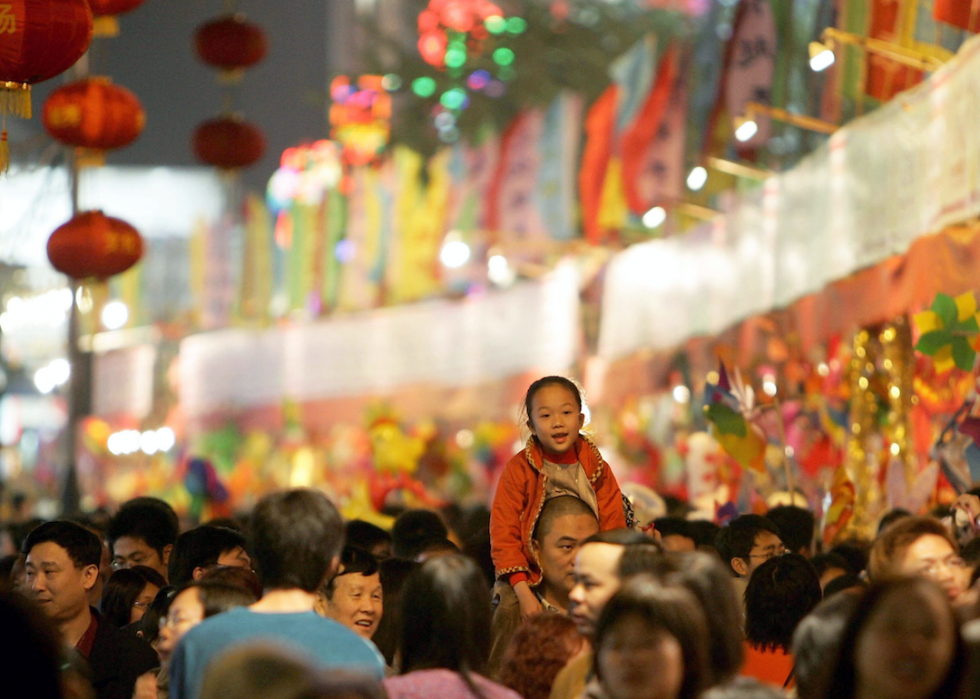
Night markets
The night market is a temporary market that allows all who celebrate to gather and share meals, enjoy performances, and shop. In this photo, residents visit a night market to mark the Chinese New Year in Guangzhou, Guangdong province, China.
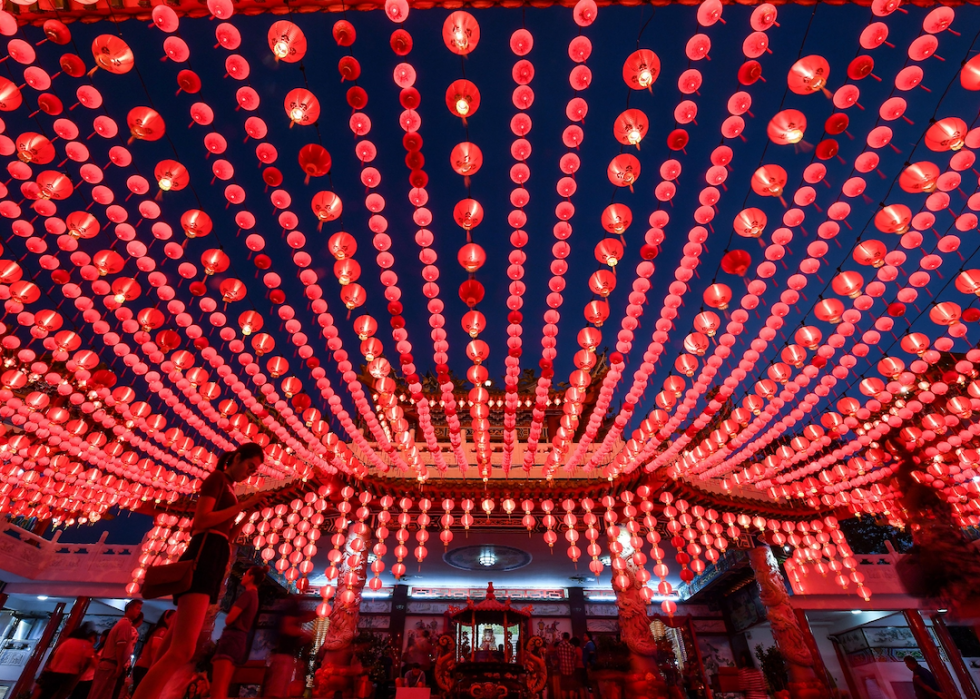
Cultural attractions
Chinese New Year has several cultural attractions that draw in tourists from around the world, keen to participate in the ancient traditions of the Lunar New Year. In Singapore, pineapple tarts attract hungry travelers, while Malaysia boasts one of the oldest and largest temples. Pictured above, devotees arrive to offer prayers at Malaysia's famous Thean Hou temple decorated with red lanterns in Kuala Lumpur.
[Pictured: Devotees arrive to offer prayers at the Thean Hou temple decorated with red lanterns in Kuala Lumpur.]
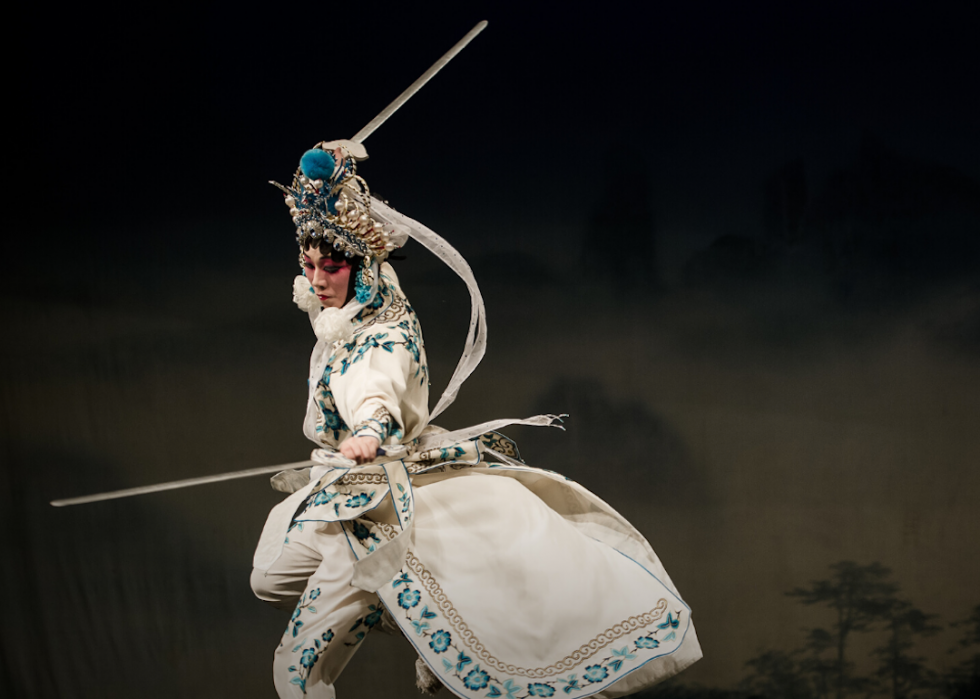
Cultural performances
In addition to the many parades and dances performed within the days-long celebrations, there are also cultural performances, including operas, stilts acts, and ballets. Here, an actor performs a Cantonese opera in Hong Kong during New Year Celebrations.
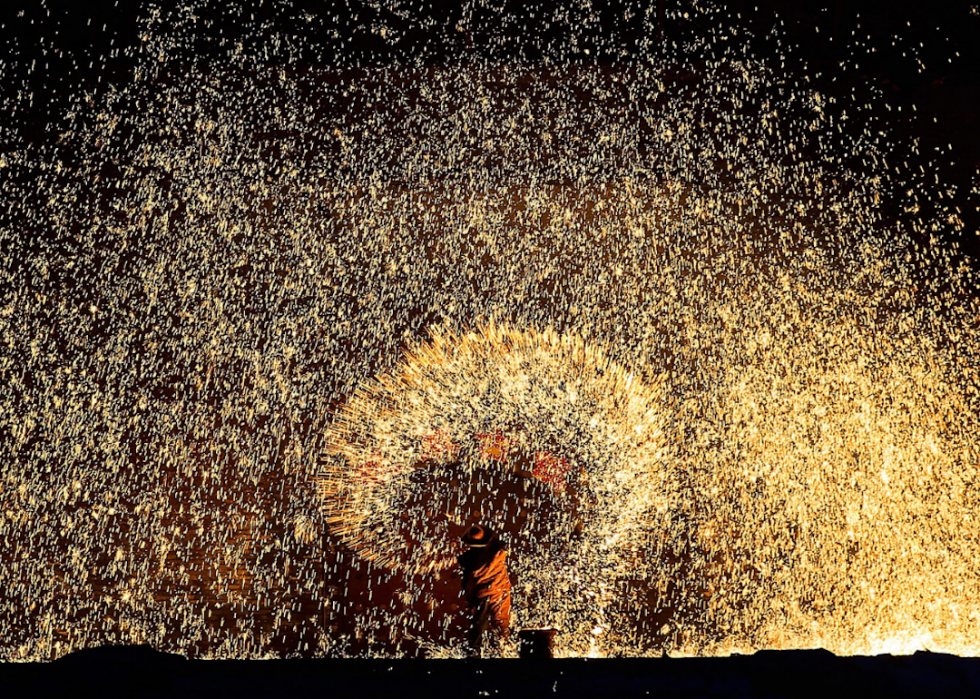
Regional cultural traditions
While the Chinese New Year is celebrated worldwide, every country and region has its own unique traditions. This Chinese blacksmith, pictured above, is preparing to throw the molten metal against a cold stone wall to create sparks that appear like fireworks in Nuanquan, Hebei Province, China. This is just one example of a regional tradition to bring in the new year.
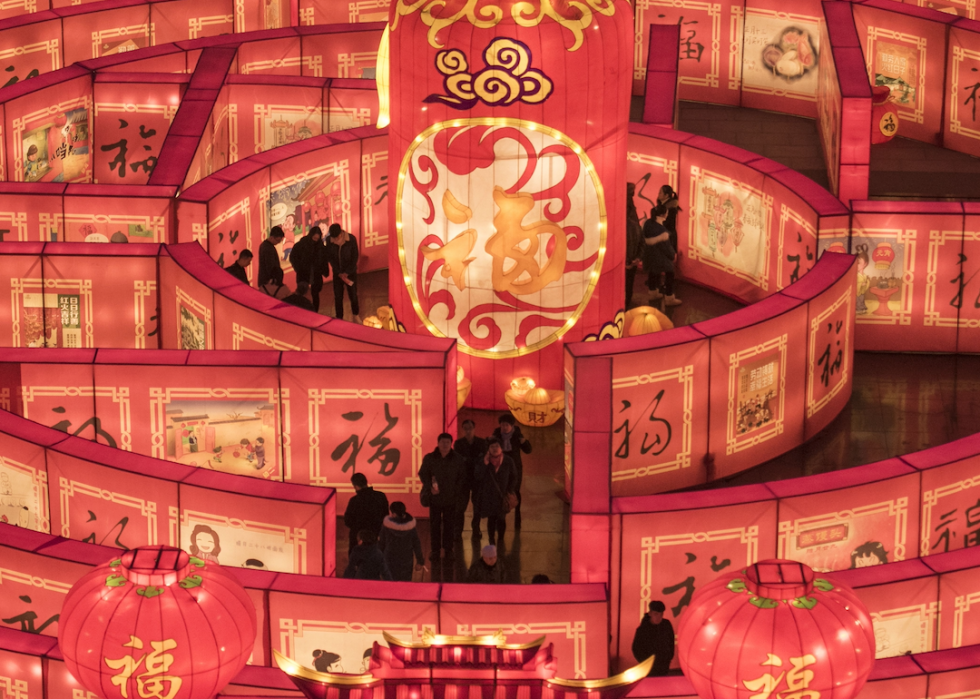
Entertainment with family
New Year’s is nothing if not a time to spend with the whole family. Because of this, many of the celebratory traditions involve children, including the maze at the Tang Paradise Park (pictured above) in Xi’an, China. Parades, markets, and performances are often intended to include the whole family.
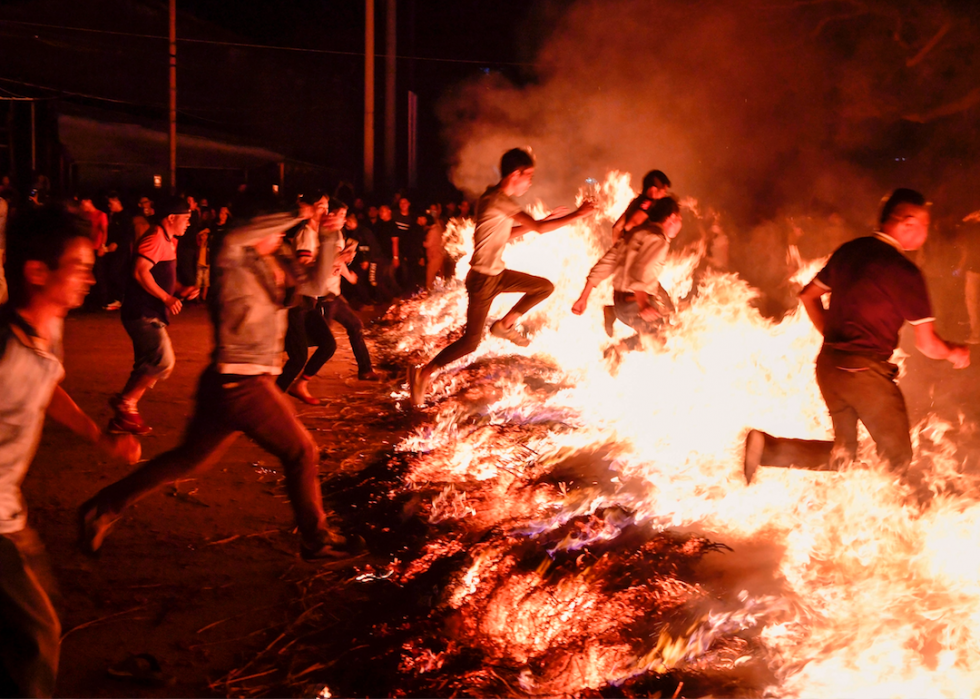
Jumping over the bonfire
In some cultures, as the celebrations wind down, people participate in the tradition of jumping over a bonfire. This signifies leaping into the new year and leaving the old year behind. Pictured here are people jumping over the bonfire to celebrate the lantern festival in Haikou, China.
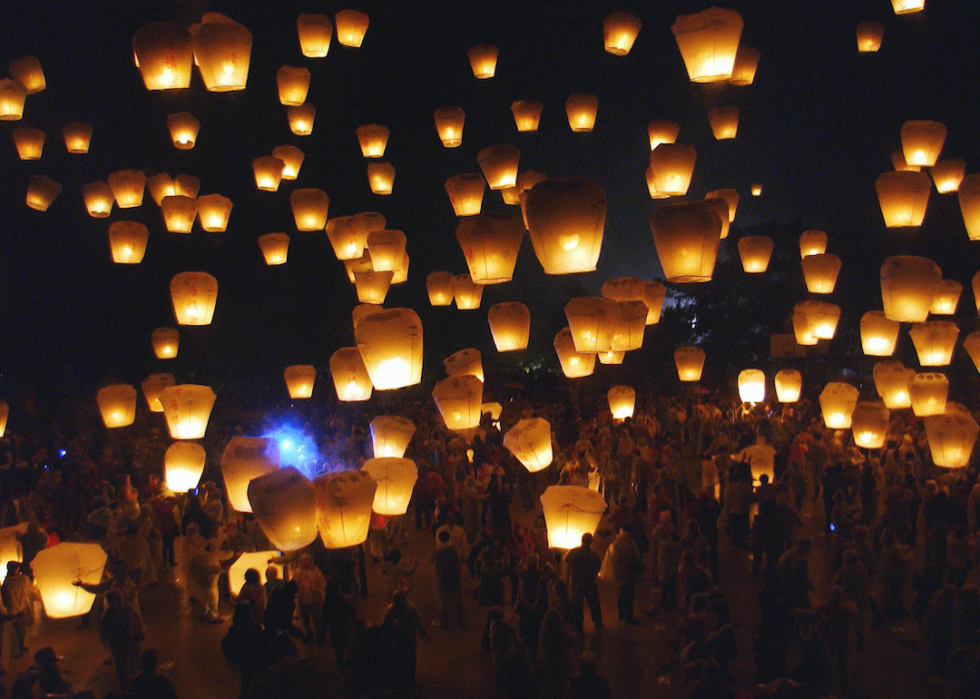
Lantern festival
The last day of Chinese New Year is marked with the lantern festival on the first full moon of the new year. The festival marks the reunion of family and the return of spring and can be traced back to 2,000 years ago during the Han dynasty. Lanterns are decorated with drawings and wishes for the new year and then lit to float off into the sky. Above, Taiwanese bystanders watch as a string of sky lanterns are released in Taipei, Taiwan.



